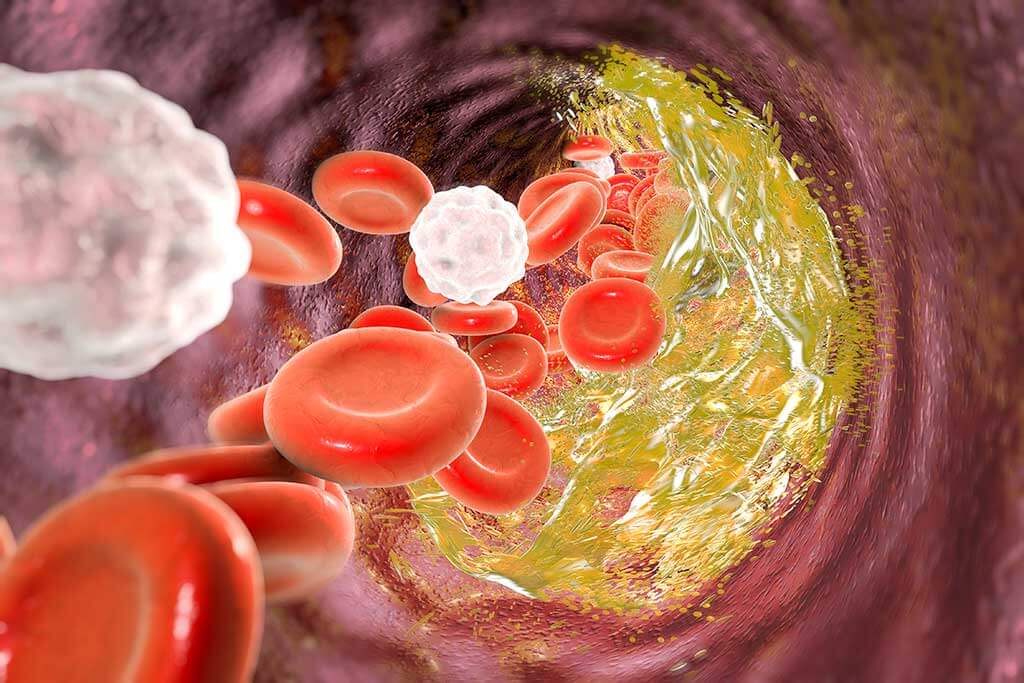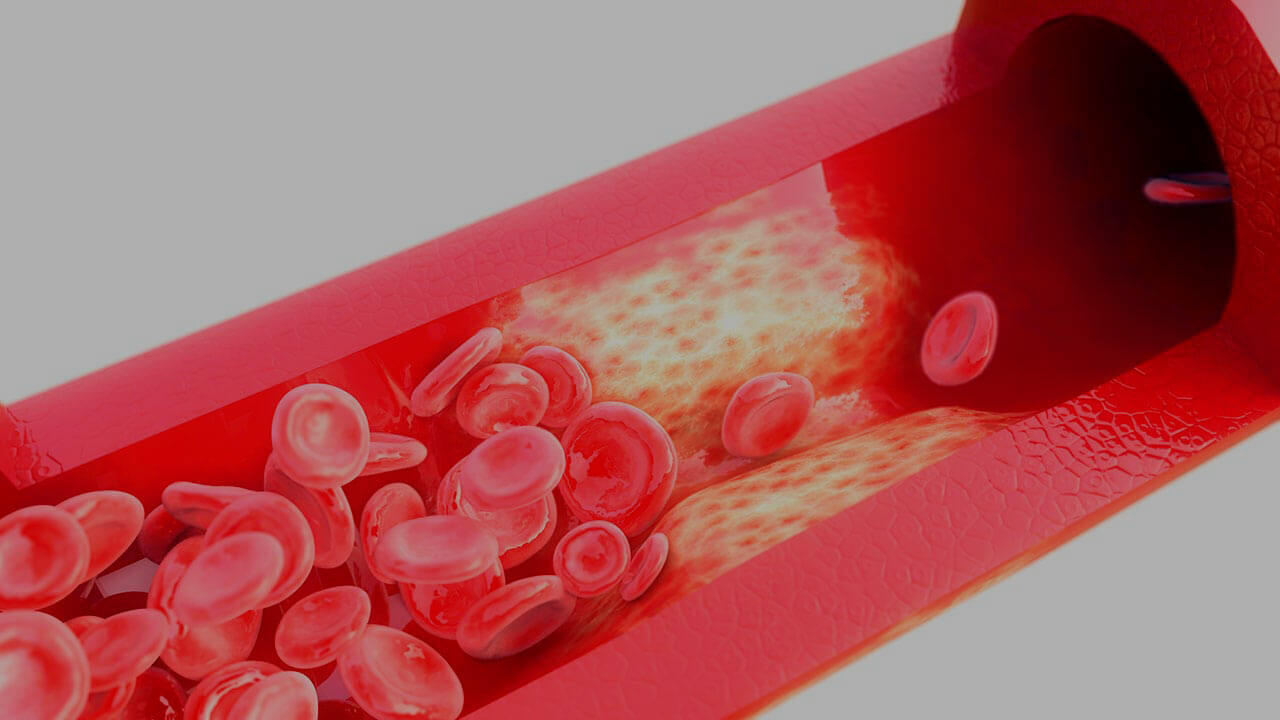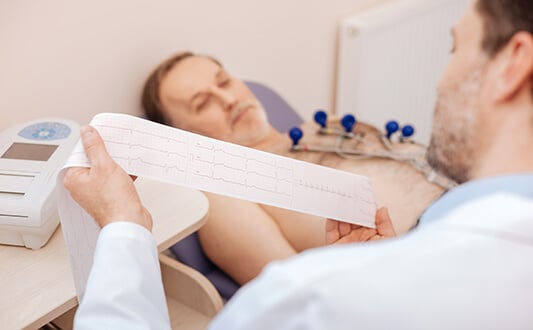Atherosclerosis is a chronic pathological process in the arteries, associated with the formation of atherosclerotic plaques inside them. These formations block the lumen of the blood vessel, which leads to a deterioration of the blood supply to the organs in the surrounding area. In the worst case scenario, atherosclerosis becomes the cause of tissue necrosis (death). If this occurs in the heart or brain, myocardial infarction or ischemic stroke develops.
Content
- Causes of atherosclerosis
- Symptoms of atherosclerosis
- Diagnostics of atherosclerosis
- Treatment of atherosclerosis
- Prognosis for atherosclerosis
- Hospitals and treatment costs
- How to make the hospital choice?
Causes of atherosclerosis
Atherosclerosis does not develop suddenly. This is a pathological process which progresses slowly over years and decades.
Main risk factors that increase the possibility of the disease are:
- Diabetes
- Smoking
- Stress
- High cholesterol in the blood
- High blood pressure
- Obesity
- Lack of exercise (sedentary lifestyle)
- Heredity
- Hypothyroidism
- Vitamin B6 deficiency
- Post menopause in women
Certain risk factors can be corrected. You can slow down the speed of atherosclerosis development by influencing them. Key prevention measures include losing weight, increasing exercise, drugs to lower the cholesterol level, monitoring of arterial pressure, giving up smoking.
Symptoms of atherosclerosis
Clinical manifestations of atherosclerosis depend on the location of the pathological process. Arteries can be clogged in different parts of the human body.
But we can distinguish between several of the most frequent atherosclerosis locations:
- Coronary arteries as they nurture the myocardium. Atherosclerosis of coronary arteries triggers the ischemic heart disease. It manifests itself as a pressing pain behind the breastbone due to a physical load, and then at rest. Over time, atherosclerosis of the coronary arteries can lead to myocardial infarction.
- Cerebral arteries supply blood to the brain. Decreased lumens of the vessels deteriorates a person’s memory and attention span. Afterwards, transient ischemic attacks occur, when certain brain functions are disrupted for a short time. In the absence of treatment, ischemic stroke develops which is the death of the brain region against the background of acute insufficient blood supply.
- Arteries of the lower extremities. Patients develop intermittent claudication. They do not experience symptoms during rest. When walking a long distance, there is a sharp pain, forcing them to stop. This is due to the increased demand for oxygen in the tissues. The need for oxygen is not fully satisfied, because the lumen of the vessel is reduced. As the disease progresses, the distances a person is able to walk becomes shorter and shorter. If not treated, dry gangrene may develop.
Arteries mentioned below may be less affected:
- Mesenteric arteries (can lead to necrosis of the intestine)
- Renal arteries
- Carotid bifurcation
- Abdominal aorta
Basically all the body arteries can be affected by atherosclerosis. Nonetheless, clogs don’t get so big as compared to those mentioned above and do not violate hemodynamics.

Diagnostics of atherosclerosis
Atherosclerosis is diagnosed based on symptoms and objective examination data. The diagnosis is confirmed with the help of laboratory and instrumental methods.
Laboratory tests determine the elevated level of cholesterol in the blood, some classes of lipoproteins, triglycerides. Instrumental methods make it possible to measure the velocity of blood flow in the vessels affected by the pathological process. Doppler ultrasound is used (ultrasound with a special sensor) for this procedure.
Preoperative preparation includes an angiography which is - an X-ray diagnostic method, when a contrast agent is injected into the artery. That way, a doctor can determine the exact size and location of the plaques, the degree of the artery lumen obturation.
Diagnostic measures are also aimed at assessing the structure and function of target organs (heart, brain, kidneys, and lower limbs).
Treatment of atherosclerosis
Treatment can be both conservative and surgical. Conservative treatment is unable to eliminate manifestations of atherosclerosis. Its objectives are to:
- Slow the progression of the disease
- Prevent blood clotting
- Prevent acute cardiovascular events
- Preserve target organs function
- Reduce the symptoms of the disease in order to improve the quality of the patient’s life
Significant obturation of the artery lumen, which is accompanied by a sharp decrease in the patient’s life quality, an increased risk of cardiovascular events (myocardial infarction, stroke, rupture of the aortic aneurysm) requires surgical treatment. It can be conducted in different ways.
It all depends on:
- Location of the affected vessel
- The extent of atherosclerotic changes
- The patient's condition, financial capabilities
- The equipment and personnel potential of the hospital
Most frequent operations done to get rid of this condition are stenting (dilatation of the vessel by inserting a helix into its lumen) and aorta-coronary bypass (creation of blood flow bypass for a regular blood supply to the myocardium). But other methods are also used. For example:
- Atherectomy which is a removal of a thrombus from the artery
- Laser myocardial revascularization
There are also innovative directions in the non-surgical treatment of atherosclerosis of various locations, for example:
- Shock wave therapy
- Quantum therapy
- Enhanced external counterpulsation
- Use of stem cells to repair damaged organs
Prognosis for atherosclerosis
Prognosis is unfavourable if atherosclerosis is not treated at all. The disease will progress, especially if the patient does not receive any treatment and does not eliminate the risk factors of the disease. Over time, this leads to irreversible damage of the vital internal organs. The death of such patients most often occurs due to ischemic stroke or myocardial infarction.
Proper conservative and surgical treatment ensures the opportunity for a favourable prognosis. Adequate medical measures can slow the formation of atherosclerotic changes in the blood vessels and restore normal blood supply to the internal organs.
Hospitals and treatment costs
Cardiologists, cardiac surgeons and vascular surgeons are engaged in the diagnostics and treatment of atherosclerosis and its complications. Patients with atherosclerosis can undergo treatment in the cardiology departments of large multidisciplinary hospitals or choose a small specialized praxis.
Among the hospitals that specialize in the treatment of atherosclerosis are:
- Hospital Neuperlach Munich, Department of Cardiology and Pulmonology
- St. Vincentius Hospital Karlsruhe – Academic Hospital of the University of Freiburg, Department of Cardiology, Angiology and Intensive Care Medicine
- University Hospital Ulm, Department of Cardiology, Angiology and Internal Intensive Care
- University Hospital Frankfurt-am-Main, Department of Cardiology and Angiology
- University Hospital RWTH Aachen, Department of Cardiology, Pulmonology and Angiology
The cost of treatment is determined for each patient individually, based on the results of the initial clinical and laboratory examination. Average costs of certain types of examination and treatment are as follows:
- Cardiological check-up – €2,200
- Vascular check-up – €2,050
- Treatment of myocardial infarction with percutaneous balloon angioplasty with stenting – €30,700
- Diagnostics and conservative treatment of stroke – €12,270
- Cardiac rehabilitation – €783 daily
How to make the hospital choice?
You can receive qualitative atherosclerosis treatment and other related diseases in German hospitals. Use Booking Health online-service to find the medical facility best for you. This is an international online-platform for booking treatment abroad. Service is free of charge.
Benefits of Booking Health online-platform are:
- Direct contracts with clinics
- Always up-to-date prices
- Complete list of diagnostic and treatment programmes
- Free assistance of a medical consultant if necessary
Leave a request on our website to get assistance regarding the choice of the hospital and settle the treatment abroad. We are going to find a suitable hospital where you will be able to get thorough medical services at affordable rates. Thus, you will save up to 70% from the cost of diagnostic and therapeutic procedures as treatment programme will be optimised for you.
Choose treatment abroad and you will for sure get the best results!
Authors:
This article was edited by medical experts, board-certified doctors Dr. Nadezhda Ivanisova, and Dr. Bohdan Mykhalniuk. For the treatment of the conditions referred to in the article, you must consult a doctor; the information in the article is not intended for self-medication!
Our editorial policy, which details our commitment to accuracy and transparency, is available here. Click this link to review our policies.
Sources:
Centers for Disease Control and Prevention
Read:
Stem Cell Therapy for Multiple Sclerosis
Don't know where to start?
Contact Booking Health






